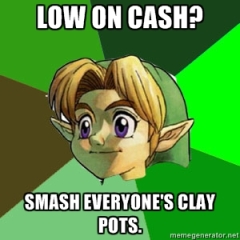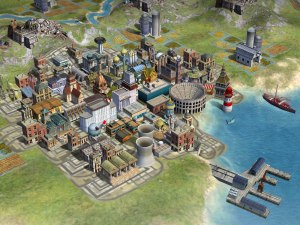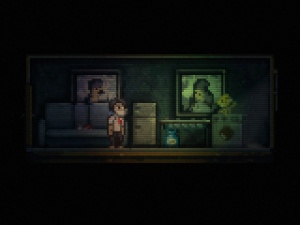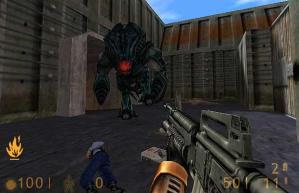“You have destroyed so much– what is it exactly that you have created? Can you name even one thing? I thought not.”
–Wallace Breen, Half-Life 2
Video game plots have long been accused of being the run of the mill good vs. evil stories. And for the most part that’s true, even the best game plots often feature mostly black and white characters and or morality systems with purely good and evil options. But the real underlying conflict that most gameplay features is actually not good vs. evil, but the struggle between order and chaos. This is probably, in part, due to the element of agency in gaming– unlike other mediums, the core principle of the medium is about the player having freedom in a premade world.
So in this article, we’re going to shed some light on this never ending battle and show how some of your favorite games portray this eternal conflict.
The Player as an Agent of Chaos
This is really the underlying conflict in the majority of video games on the market. The player controlled character invades an area controlled by the enemy with carefully laid out obstacles, traps, puzzles, enemy formations, etc. Essentially a carefully set-up environment that the player character is meant to ride roughshod through (like that time you knocked over that block tower your little brother was building). Despite what the background story may say about how the villains are invading and disrupting the status-quo (also chaos vs. order), when you take over and start actually playing through the levels, you’re wreaking havoc on the carefully arranged battlements set up by the enemy. Even something as grotesque as the R-Type series’s Bydo Empire, a strange alien army composed of machines and deformed flesh, is still an organized group that spends time building and fortifying defenses that you need to penetrate/destroy. Even more mundane gameplay activities, like smashing pots and slicing up carefully groomed bushes for cash in the Zelda series, involve messing up or destroying some other character’s hard work.
Perhaps the game series that is the most honest about this perpetual conflict is the famous Grand Theft Auto series, which might be one of the reasons we like it so much. Obviously rampaging around the city fighting the cops makes you a force of chaos, but the story missions carry out this theme just as much, especially in IV. Niko Bellic is honestly just as dangerous to his employers as he is to everyone else in the city. At least 6 (more depending on some of the choices you make) mission givers are killed by Niko himself and several more are killed or brought down by the whirlwind of danger surrounding him. He not only disrupts the order of Liberty City, but disrupts the order of its criminal underworld as well. GTA: Vice City’s protagonist, Tommy Vercetti, takes a slightly different approach. Anyone who’s played the game knows that Vercetti deals out as much chaos as any other GTA protagonist, but during the second half of the story Tommy does begin to restore some order to the criminal empire he just decimated. After destroying Ricardo Diaz’s organization halfway through the game, Vercetti’s focus shifts toward building up his own organization, which causes a bit of a gameplay shift. He purchases businesses around the city and builds them up as branches of his own criminal empire. Even though the missions for the businesses usually involve wreaking havoc against someone else, you still have the sense that you’re building something, which makes Vice City a little bit more toward the middle on the order/chaos spectrum.
Bringing Order to Chaos
This is the approach that most strategy games take, where your entire goal is to build your own army or settlement from resources that you collect. One of the best examples of a game in this category is the Civilization series, where you literally start off in an untamed wilderness and must build and progress your own society through the different periods of history. While you can choose to wage war against rival civilizations in order to win the game, you can also win via negotiation, science, art and other less chaotic methods, which places the Civilization games firmly on the order end of the spectrum. You even build your society’s values, transitioning from a chaotic tribe intent only on survival to a culture with a very focused and specific set of principles. Even further in the order category are titles like SimCity, the Tycoon games, and the strangely popular Euro Truck Simulator, where the entire goal of the game is to manage something in an orderly fashion, whether that be a city, an amusement park, a zoo, or any of the other kinds of businesses the Tycoon games feature. While these kinds of games certainly have a dedicated following, there aren’t nearly as many titles that focus on creating order. There are probably a number of reasons for this but perhaps the main one is simply that causing chaos is just more fun. Even in SimCity, causing natural disasters and watching buildings topple is very enjoyable, despite the fact that it’s supposed to be an event the player wants to avoid. Despite this, these kinds of games can provide a welcome change of pace and we may see some intresting twists on gameplay dealing with bringing order to chaos in years to come.
Surviving in a Chaotic World
Games that fit into this category don’t quite belong on the order to chaos spectrum like the games mentioned above do. Instead, the locations these games take place in are designed to be chaotic and the goal is to push through and survive in a harsh environment. Many survival horror games like Silent Hill 2 and the recent indie hit Lone Survivor fit into this category. While combat is technically an option in these games, the ability to inflict chaos back against your enemies is intentionally limited to make you feel all the more helpless. In Lone Survivor’s case, the game actually rewards you for not killing enemies, despite the fact they won’t hesitate to do you in. The game also encourages you to preserve what you can of your normal, more routine life, like eating regularly (and well), limiting your intake of pills, and even adopting a cat. The emphasis here is truly on surviving while surrounded by utter chaos and even making the most out of such a situation, instead of destroying or instituting order. You win by keeping yourself under control, not the world.
Of course, like how Vice City is a partial overlap between the above two categories, there are games in this category that overlap with one of the others too. The original Half-Life takes place, for the most part, in an incredibly hostile environment where Gordon Freeman cannot fight all of his foes directly (like that obnoxious tentacle monster). The game beginning like just another day working at Black Mesa even enhances the chaos that you feel after everything goes to hell. However, your ability to fight back against the Xen aliens and the resilient commandos (who are trying to cover-up the whole affair) is substantial enough to set it apart the survival horror titles listed above, as Gordon Freeman ends up causing a fair amount of chaos himself during the course of his adventure. The protagonist’s world is being destroyed, but he can’t rebuild– only fight back.





